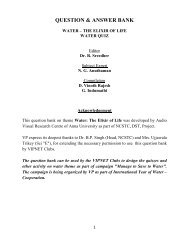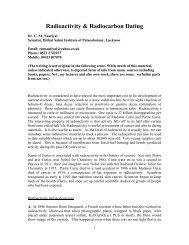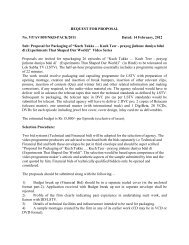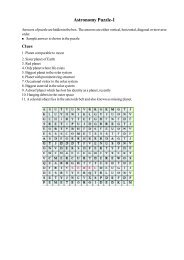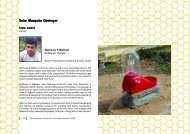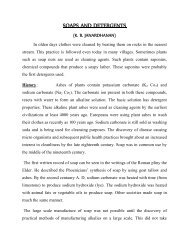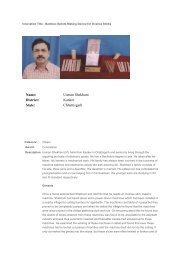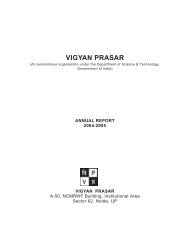Vidyarthi Vigyan Manthan: A national programme to ... - Vigyan Prasar
Vidyarthi Vigyan Manthan: A national programme to ... - Vigyan Prasar
Vidyarthi Vigyan Manthan: A national programme to ... - Vigyan Prasar
You also want an ePaper? Increase the reach of your titles
YUMPU automatically turns print PDFs into web optimized ePapers that Google loves.
Experts at the Indian Institute of Technology, Kanpur resolved the mystery behind 1600-year-<br />
old iron pillar in the year 2002. Metallurgists at IIT-Kanpur have discovered that a thin layer of<br />
‘misawite’ – a compound of iron, oxygen and hydrogen – has protected the cast iron pillar<br />
from rust. The protective film <strong>to</strong>ok form within three years after erection of the pillar and has<br />
been growing ever so slowly since then. After 1600 years, the film has grown just one-<br />
twentieth of a millimetre thick. The protective layer was formed in the presence of high<br />
amounts of phosphorus that acted as a catalyst. It was a unique iron-making process<br />
practised by ancient ironsmiths in India who reduced iron in<strong>to</strong> steel in one step by mixing it<br />
with charcoal. Modern blast furnaces, on the other hand, use limes<strong>to</strong>ne in place of charcoal<br />
yielding molten slag and pig iron that is later converted in<strong>to</strong> steel. In the process, most<br />
phosphorous content is carried away by the slag.<br />
The pillar, weighing more than six <strong>to</strong>nnes, was erected by Chandragupta II Vikramaditya (375–<br />
414 CE) (interpretation based on careful analysis of the archer-type Gupta gold coins) of the<br />
Gupta dynasty that ruled northern India during 320–540 CE.<br />
XXX<br />
2



